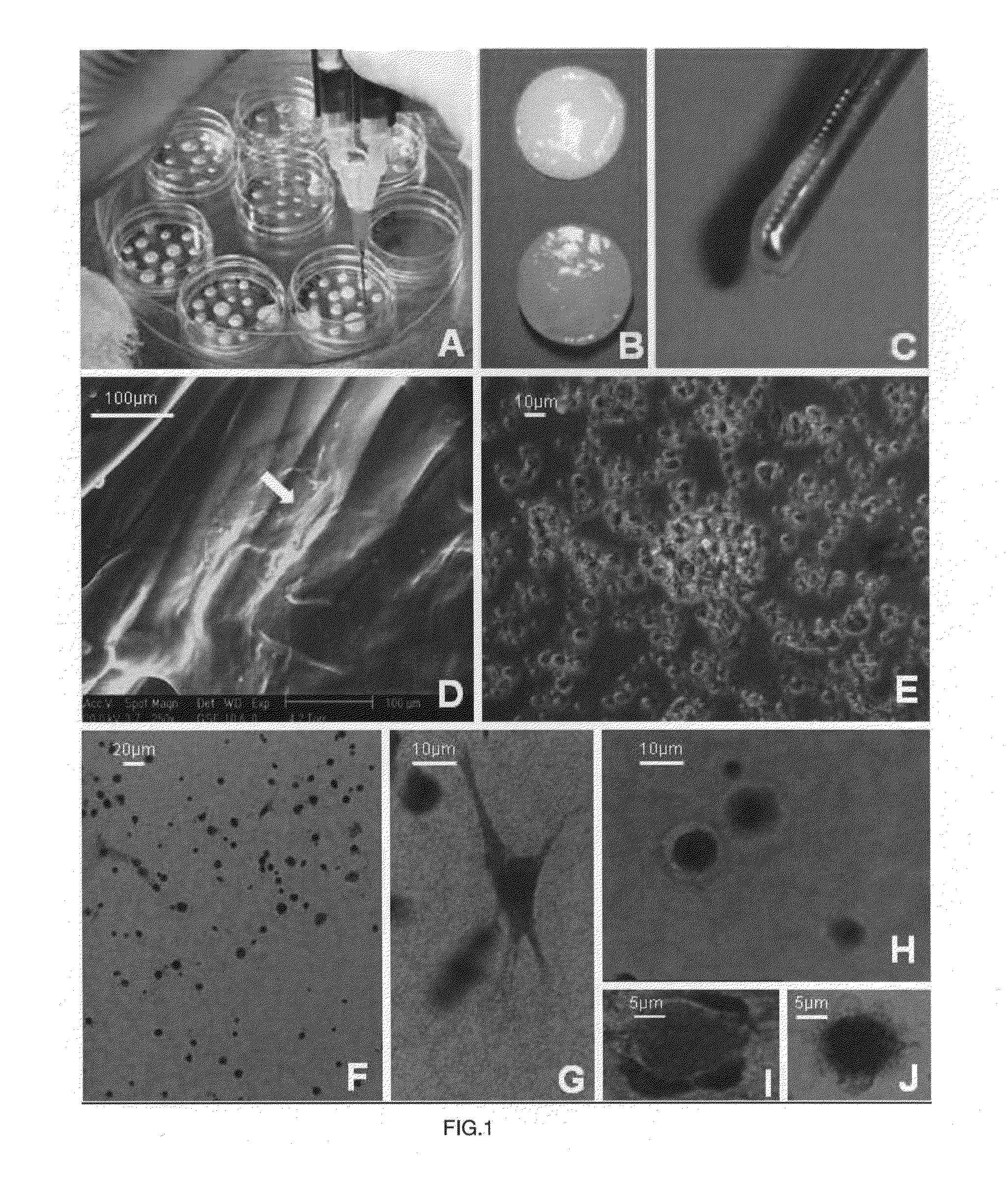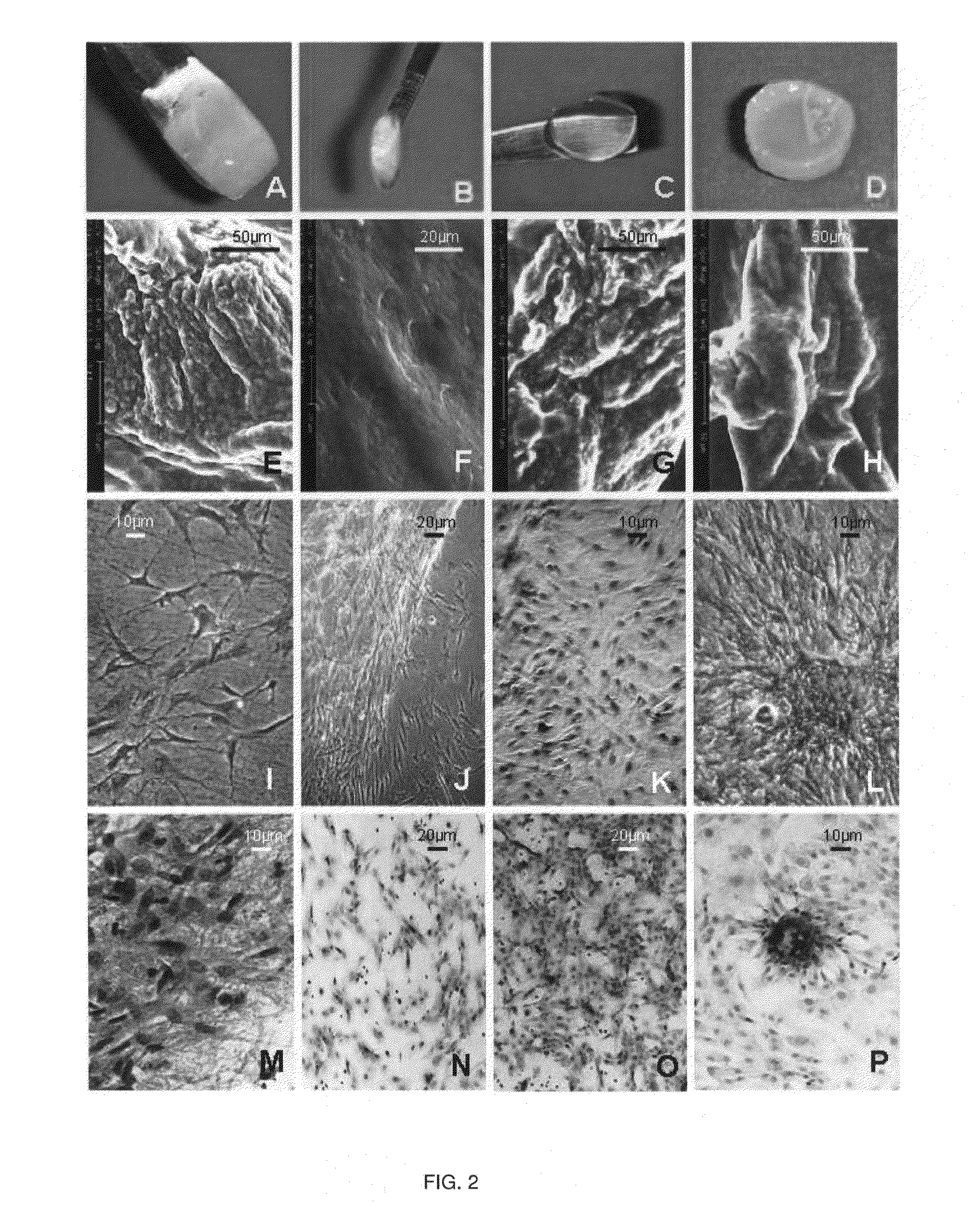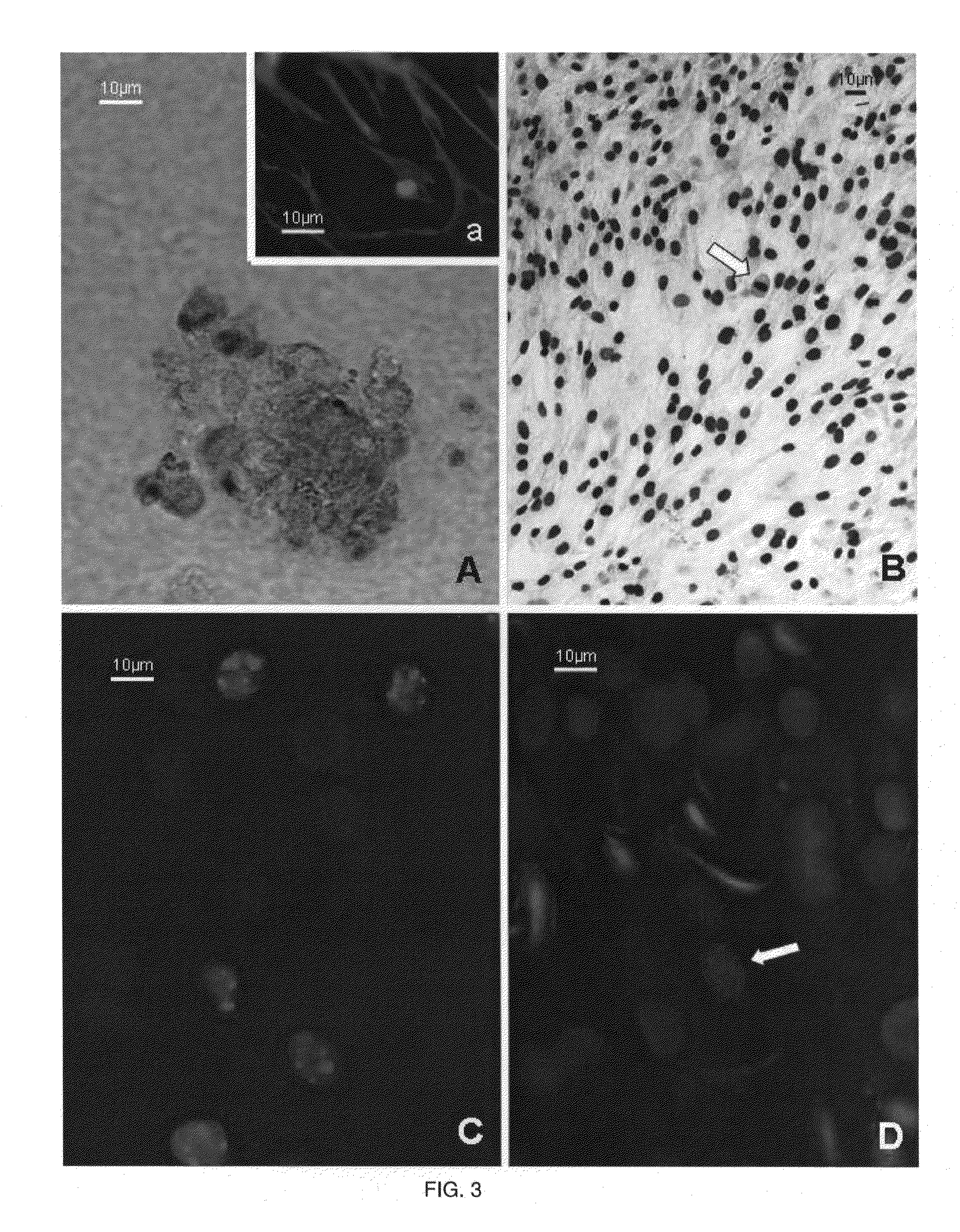Graft composition for neural tissue regeneration, method of production and uses thereof
a neural tissue and composition technology, applied in the field of neural tissue regeneration, can solve the problems of inability to produce long-distance regeneration on their own, cells face ethical and histopathological challenges, and trophic factors cannot solve the lack of ecm guidance, etc., and achieves a high survival rate and is easy to shap
- Summary
- Abstract
- Description
- Claims
- Application Information
AI Technical Summary
Problems solved by technology
Method used
Image
Examples
example 1
Comparative Study Between Fibrin Gel Implants and PRP Gel implants in fostering cell multiplication, migration and differentiation.
[0063]Cell Morphology after Seven Days in Culture
[0064]In the present study, hBMSC showed the following profile after phenotypic flow cytometry studies: CD29+, CD44+, CD105+, CD166+, CD34−, CD45−.
[0065]FG-scaffolds were consistent and fairly manageable, but hBMSC were not properly adhere to the fibrin mesh and a few hours of culture appeared to form clusters of cells with a rounded morphology and were only occasionally able to display any cell with a typical mesenchymal morphology (Table III).
TABLE IIIMorphological aspects of the seeded hBMSC in the course of theseven days of culture, according to the scale described in themethodology (Whillert et al.).FG-scaffold:5 / 2 scaffold10 / 4 scaffold20 / 100 scaffold100 / 500 scaffoldday 1+++++day 2+++++day 3+++++day 4++++++day 5+++++++day 6+++++++day 7++++++++
[0066]FIG. 1 shows different morphological aspects of FG-sc...
example 2
[0079]A total of 10 adult Wistar rats were used. All of them were submitted to a cortical lesion, through brain cortex resection at the parietal level after craniotomy. Immediately after the lesion, blood was extracted from the animals and gel was prepared according to the protocol:
Component A: Platelet Rich plasma (PRP)+cells (500.000)+BDNF (100 ng / ml)
Component B: Thrombine 5 UI+calcium chloride (34 micromoles / ml).
Both components were mixed and the resulting gel was placed on the brain lesion in 6 animals (FIGS. 5A and B). In 4 animals, the same protocol was carried out, but without cells.
[0080]After a week, histological studies were carried out. In FIG. 5C the aspect of grafted cells are shown (study developed through bisbenzimide label analysis). It was observed that grafted cells showed a normal aspect and their viability was higher than 60%. In those animals in which cells encapsulated in the gel were implanted, viability of grafted cells with neural differentiation signals wer...
PUM
| Property | Measurement | Unit |
|---|---|---|
| density | aaaaa | aaaaa |
| density | aaaaa | aaaaa |
| temperature | aaaaa | aaaaa |
Abstract
Description
Claims
Application Information
 Login to View More
Login to View More - R&D
- Intellectual Property
- Life Sciences
- Materials
- Tech Scout
- Unparalleled Data Quality
- Higher Quality Content
- 60% Fewer Hallucinations
Browse by: Latest US Patents, China's latest patents, Technical Efficacy Thesaurus, Application Domain, Technology Topic, Popular Technical Reports.
© 2025 PatSnap. All rights reserved.Legal|Privacy policy|Modern Slavery Act Transparency Statement|Sitemap|About US| Contact US: help@patsnap.com



